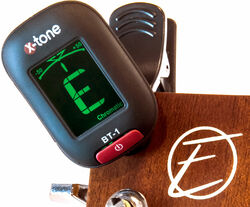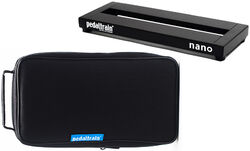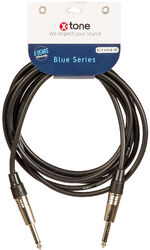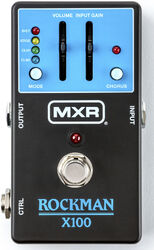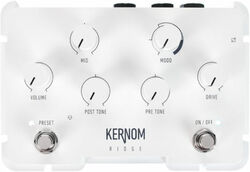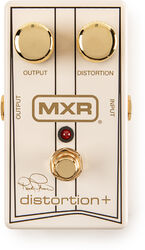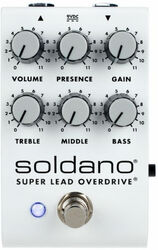Warenkorb
Electronic audio experiments DAGGER
- Bewertungen lesen (0)
- Zugehöriges Zubehör
- Ähnliche Produkte
- Kostenlose Lieferung
- Günstige Preise garantiert
- Zufrieden oder erstattet
- 3 Jahre Garantie
Im moment nicht verfügbar
kontaktieren Sie uns
Lagerbestand
Nicht im Geschäft erhältlich
INFORMIEREN SIE MICH ÜBER SEINEN EINTRAG AUF LAGER
Ich möchte per E-Mail benachrichtigt werden
Go
Die Marke Electronic audio experiments
Erfahren Sie mehr über die Marke Electronic audio experiments und entdecken Sie den gesamten Katalog.
Kaufberatung für Bassgitarren-Effekte
Wie navigiert man durch die Fülle der auf dem Markt erhältlichen Effektpedale? Star's Music zieht Bilanz, folgen Sie dieser Kaufberatung!
Wenden Sie sich an einen Experten
Unsere musikbegeisterten und begeisterten Teleberater sind hier, um alle Ihre Fragen zu beantworten.
Overdrive/distortion/fuzz effektpedal
The Dagger is a pedal offered by the Electronic Audio Experiments brand.
The Electronic Audio Experiments Dagger is a simplified and miniaturized version of the Longsword op amp pedal. The circuit has been stripped down while retaining its main gain stages and dual-band EQ, providing an ideal combination of simplicity and flexibility.
By miniaturizing the Longsword, the Dagger found its own sonic identity. During this process, quirks and unique features from previous versions of Longsword were re-examined. The Longswords V1 and V2 have less headroom, allowing the EQ controls to overdrive the output stage for a distinctly fuzzy sound. Although not a traditional usage, this sound was adopted and incorporated into the Dagger. In addition to being ideally suited to small pedalboards, the Dagger also makes a unique driver pedal. The Electronic Audio Experiments Dagger is a simplified, miniaturized version of the Longsword op-amp pedal. The circuit has been stripped down while retaining its main gain stages and dual-band EQ, providing an ideal combination of simplicity and flexibility.
By miniaturizing the Longsword, the Dagger found its own sonic identity. During this process, quirks and unique features from previous versions of Longsword were re-examined. The Longswords V1 and V2 have less headroom, allowing the EQ controls to overdrive the output stage for a distinctly fuzzy sound. Although not a traditional usage, this sound was adopted and incorporated into the Dagger. In addition to being perfectly suited to small pedalboards, the Dagger also makes a unique pilot pedal.
The Electronic Audio Experiments Dagger is a simplified and miniaturized version of the Longsword op amp pedal. The circuit has been stripped down while retaining its main gain stages and dual-band EQ, providing an ideal combination of simplicity and flexibility.
By miniaturizing the Longsword, the Dagger found its own sonic identity. During this process, quirks and unique features from previous versions of Longsword were re-examined. The Longswords V1 and V2 have less headroom, allowing the EQ controls to overdrive the output stage for a distinctly fuzzy sound. Although not a traditional usage, this sound was adopted and incorporated into the Dagger. In addition to being ideally suited to small pedalboards, the Dagger also makes a unique driver pedal. The Electronic Audio Experiments Dagger is a simplified, miniaturized version of the Longsword op-amp pedal. The circuit has been stripped down while retaining its main gain stages and dual-band EQ, providing an ideal combination of simplicity and flexibility.
By miniaturizing the Longsword, the Dagger found its own sonic identity. During this process, quirks and unique features from previous versions of Longsword were re-examined. The Longswords V1 and V2 have less headroom, allowing the EQ controls to overdrive the output stage for a distinctly fuzzy sound. Although not a traditional usage, this sound was adopted and incorporated into the Dagger. In addition to being perfectly suited to small pedalboards, the Dagger also makes a unique pilot pedal.
Lire la suite
Technisches Arbeitsblatt
- für E-Gitarre Ja
- Bypass: relay switching with true bypass
- Input impedance at 1 Khz: 500 k ohms
- Output impedance at 1 Khz: less than 25K (passive volume control)
- Power supply: 9-18V DC, 2.1mm center negative barrel. Current consumption is 50 mA


